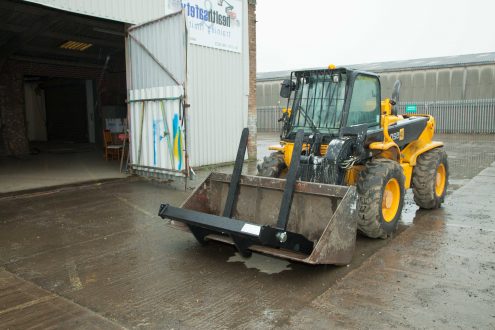What are the different types of plant machinery?
If you work in the construction industry, chances are you would benefit from investing in plant machinery and equipment, such as excavators, cranes and dumpers, to enable your staff to work more effectively.
But with a wide range of machinery, all designed to carry out specific jobs, it can be difficult to know which is best suited for your purposes and environment. Have a read through our quick guide below to discover more about the commonly utilised plant machines in the construction industry:
180 Degree Backhoe Loader
A backhoe loader features powerful hydraulics to provide exceptional digging, trenching, back-filling and material-handling functions. Their versatile and robust build means that they are utilised throughout the construction industry for digging foundations for some of the largest building projects, as well to assist with breaking asphalt and road surfacing, and with demolition and excavating projects. They are also heavily relied on in the landscaping industry, as they can shift a lot of material in a very short space of time.
Backhoes provide great power alongside precise handling and performance, allowing you to work in areas of restricted size, where a larger machine may not be able to gain access or safely operate. Ultimately, their smaller size and versatility makes them a more effective and productive tool to invest.
360 Degree Excavator
An excavator, sometimes known as a digger or mechanical shovel, is a huge piece of heavy construction equipment. Its versatility means that it is a very common piece of equipment and is used for everything from trenching, material handling and digging foundations to forestry, landscaping, mining and even river dredging.
The cab of the machine is situated on a rotating platform, the ‘house’, which features a boom, stick and bucket, all on top of the carriage which either has wheels or tracks for manoeuvring.
Loading Shovel
A loading shovel is a heavy duty vehicle used throughout the construction industry. Because it is a wheeled vehicle it is extremely versatile and has been specifically designed to assist with an array of tasks.
They are most commonly utilised in the moving and loading of materials in a range of applications, such as quarrying, ground clearance, block handling, waste and recycling handling and agriculture.
Overhead Gantry Crane
Overhead gantry cranes (bridge cranes, suspension cranes or overhead travelling cranes) are large pieces of machinery featuring a crane that can lift heavy objects via a hoist system which is attached to a trolley.
The ends are supported by a gantry beam which rests on wheels and runs along rails. Gantry cranes are usually installed on the side walls of a factory or large building, as well as docks and outdoor construction areas, meaning the crane can lift and carry objects the entire length of the building. Most commonly utilised in the manufacturing of large equipment and vehicles, loading and materials handling.
Lorry Loader
A lorry loader crane, or articulating crane, is a hydraulic articulated arm fitted to a truck or lorry that is most commonly used for loading and unloading materials from the vehicle, popular because the transport and movement of the load only requires one vehicle, rather than a lorry to transport and a separate crane to load/unload.
The ‘arm’ is made up of sections that can be folded away when not required, and can have a telescopic section fitted for higher lifting capabilities. Most cranes allow the operator to see the load from the cab of the vehicle, but because of the positioning of the arm, the operative would either need a fully trained banksman to direct the movement or would need to operate the crane from a remote or cabled control panel that allows them to leave the cab and view the operation.
Forward Tipping Dumper
A forward tipping dumper is smaller, but an incredibly useful piece of onsite machinery. It is usually a 4-wheeled vehicle, with a load skip situated at the front, allowing the driver to keep an eye on the load whilst transporting it around site.
Commonly used to transport waste and materials, the front skip can be tipped to dump the load when the driver reaches the required location. As a robust and sturdy vehicle, it can also be utilised as a towing vehicle to move other equipment or vehicles around the site.
Ride On Road Roller
A ride on roller (sometimes known as a roller-compactor or roller) is a compacting engineering vehicle, used to compress soil, gravel or asphalt. Ranging in size to suit different applications, they use the weight of the large drum at the front of the vehicle to compress the surface beneath.
They are most commonly utilised in construction and road works, or to prepare ground foundations for building projects, but are also used in agriculture and at landfill sites to compact waste materials into smaller spaces.
Health and Safety Training Ltd
No matter what type of plant machinery you utilise for your business, or if you are looking for a career as an operative, it is essential that you receive certified training to ensure the safe use and operation of the equipment. Here at HST, we can provide all the relevant training you require, and can tailor our courses to suit your needs, experience or business requirements, just get in touch to learn more.
The Health and Safety Kit: Exposure to Noise The Health and Safety Kit: Substance Safety






